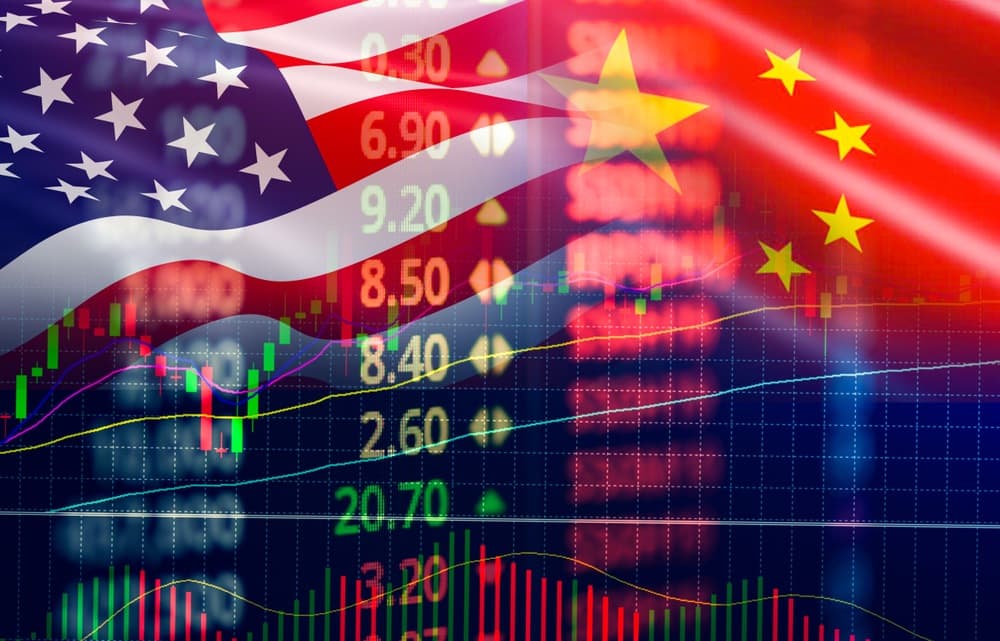Swan Dive
Jury’s still out: Correction Season? Or Crack-Up Boom?
September 8, 2025 • 6 minute, 39 second read

Markets finished last week on a split screen. The S&P 500 managed to notch a fresh record, but Nvidia dragged tech lower, and Friday’s ugly jobs report left a sour taste heading into the weekend.
Gold and silver, unsurprisingly, continued to surge.
The question hanging in the air: Is the market about to correct… or are we just entering the next leg of a crack-up boom?
Investors will try to regroup this week, like the Ravens, who, after dominating the Bills all night Sunday, watched a 15-point deficit erode in the last six minutes of the game. The Ravens lost 43-42. Bills kicked a field goal with 8 seconds on the clock. A video of the Baltimore quarterback, Lamar Jackson, getting into a shoving match with a Bills fan after the game went viral.
Inflation data is due Thursday, ahead of the Fed meeting next week.
Consensus is for a quarter-point cut. But after Friday’s jobs report, whispers of a half-point cut are growing louder. The most terrifying bull market in history would only get more fuel.
Markets are now pricing in three rate cuts by year-end, and three more in 2026, bringing estimates for the Fed funds rate down to 2.83%.

Friday’s job picture illustrates why bad news is good news. The market is now pricing in three rate cuts before the end of the calendar year. (Source: Charlie Billelo)
Trump’s Fed picks continued piling pressure on the central bank’s independence on Friday. Kevin Hassett, one name floated for the next chair, accused the Fed of “mission creep” and credibility loss.
Either way, Powell & Co. will face inflation data this week — PPI on Wednesday and CPI on Thursday — and then make their move on September 16–17.
One notable stock, Lululemon, endured a punishing workout on Friday. Shares hit their lowest level since the Covid era after a brutal earnings report prompted seven analyst downgrades. Even yoga pants can lose their stretch.
 The Great Wealth Transfer
The Great Wealth Transfer
So, what are retail investors buying? Anything AI and shiny. That gooses the index, and we get this curious setup: record buybacks and record insider selling at the same time.
Buybacks are inflating earnings per share across the S&P 500, but most companies are showing flat or declining growth.

As has been the case since 2024, the same top 10 names carry the entire index, while the S&P 490 and the real economy slump.

Thus, the S&P 500’s price-to-book ratio has now surpassed dot-com bubble levels.
Insiders are getting a heavy whiff of the top.

An updated chart from last week’s shocker reveals that 398 of 400 major insider trades were sells. (Source: @JacobKinge on X)
The last time selling was this lopsided?
The late 1920s. Back then, it didn’t end well.
Today, the wealthiest 0.00001% are unloading their bags onto the 99.99%. Call it a bull market if you like. Most insiders are happy to collect the excess capital.
We see an overheated market due for a minor pullback – before interest rate cuts send stocks soaring higher. And we see plenty of opportunities on the long side, as well as on the short side.
We’ve already profited from some market swings in our Grey Swan Trading Fraternity, with well-timed put options on Palantir Technologies, which first soared after earnings before taking a much-needed breather.
 Jobs, Bonds, and the Shadow of Deflation
Jobs, Bonds, and the Shadow of Deflation
Friday’s labor report confirmed the trend: payroll growth has slowed to a crawl, unemployment is climbing, and manufacturing shed another 12,000 jobs. That makes 78,000 manufacturing jobs lost this year, despite tariffs meant to “bring them back.”

Investors betting on long Treasurys may get their fill soon. History shows that when job growth weakens this sharply, deficits balloon. (Source: Federal Reserve)
Today we’re already at 6–7% of GDP. In a real economic downturn, deficits will blow out to 12–17%.
Rates might dip briefly, but then spike as markets demand higher yields to cover credit risk. QE can paper over the cracks, but it won’t stop the debt avalanche.
The bond market is whispering deflation. Gold is shouting it’s fait accompli.
 Tether’s Golden Hedge
Tether’s Golden Hedge
Tether, the giant stablecoin issuer, is hedging its bets. It already holds 100,000 bitcoin (worth about $7 billion) and $100 billion in Treasurys. Now it has added $8.7 billion in gold — plus stakes in miners.
The branding spin? Gold is the “Natural Bitcoin.”
The reality: Treasurys and gold are safer than crypto in a downturn.
They’re not alone. Central banks have doubled their pace of gold buying since 2022. China, Iran, Poland, and others are hoarding bullion. The message is clear: this isn’t about yield, it’s insurance against fracture. Even the biggest players in crypto no longer trust the system they rely on.
 Gold Miners on Fire
Gold Miners on Fire
Gold miners are in their own 1970s-style boom. The $GDX ETF attracted $531 million in August, the most since 2023. Last week alone, gold-linked ETFs saw $3.9 billion in inflows.

The miners are just starting to reflect the two-year surge in the gold price. (Source: Bloomberg.)
Newmont, the only gold miner in the S&P 500, has doubled this year, making it the index’s third-best performer.
Year-to-date, the gold miners ETF has soared +95%, well above bullion’s +35%.
Why? Investors aren’t buying gold on good news. They’re buying because empires crack.

The gap between the 10-year Treasury yield and the rise in gold price has become completely untethered for now. (Source: David Bateman on X)
Why hold a 2-year Treasury yielding 3.5% when gold is up 35% and silver nearly 40%?
“The world is waking up to the fraud of fiat currencies,” chastises David Bateman on X. “Central banks are fleeing the dollar. Your broker and your ignorance are the only things standing between you and generational security.”
 Immigration Meets Investment
Immigration Meets Investment
Trump’s “America First” policies collided last week in Georgia.
At Hyundai’s massive new battery plant — the largest economic development project in state history — federal agents detained 475 workers in the single largest site raid ever. The target? Just four Hispanic subcontractors.
Instead, more than 300 South Korean nationals were caught up, many holding short-term visas.
Seoul wasn’t warned.
Officials called it “a stab in the back,” especially after pledging $350 billion of new U.S. investment in July. South Korea is the U.S.’s sixth-largest trading partner and a key ally.
Now their foreign minister is in Washington to smooth things over. Trump, never one to apologize, posted on Truth Social: “All foreign companies investing in the United States must respect our laws.”
 Japan’s Tariff Trade-Off
Japan’s Tariff Trade-Off
Japan’s Prime Minister Shigeru Ishiba resigned after striking a tariff deal with Washington. Trump lowered duties on Japanese goods to 15% in exchange for $550 billion of Japanese investment in America.
Ishiba admitted he’d been negotiating his exit for weeks, but stuck it out to sign the deal. Inflation and immigration cost him his party’s majority. Now Japan heads for yet another political reset as political leaders vie for the country’s top spot.
 From Nixon to Now
From Nixon to Now
Fifty-one years ago today, President Gerald Ford pardoned Richard Nixon, ending the Watergate saga. History revealed that closing the gold window was only the beginning of Nixon’s imperial crimes.
Upon signing the pardon, Ford lamented, “Our long national nightmare is over.”
Today, we might ask: is it?
The global financial system is still dealing with Nixon’s brand of fiat currency. Again, we have a president with imperial ambition, just with a new marketing spin.
Back then, the specific scandal wasn’t about the crimes, but the cover-up. Now, the crime is transparent: deficits, debt, and institutions are losing credibility.
“Plus ca change, plus c’est le même chose,” our colleagues in the French office would say.
~ Addison
P.S.: The replay of last week’s Grey Swan Live! with Ian King is now available for paid-up members on our Video Archives site. Stay tuned for this week’s session — time and guest to be announced.
Your thoughts? Please send them here: feedback@greyswanfraternity.



